How the 1970s shaped Australian holidays
Step back in time to a decade of enormous change in how we explored our country.
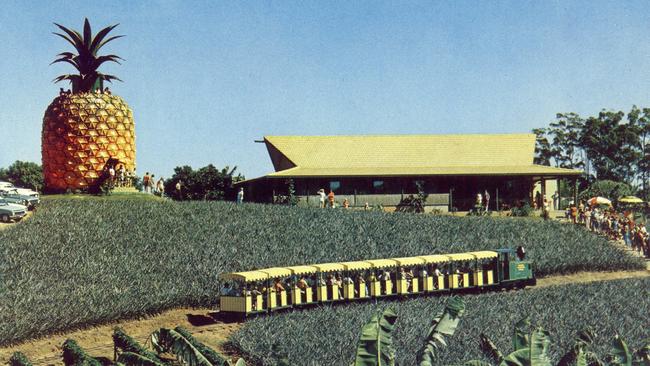
Dig out those photos of holidays past, we’re going back to the 1970s, a time of great transition in travel. From Tourism Australia’s vaults, Travel + Luxury has retrieved a copy of the National Travel Survey, a household sampling by the Bureau of Transport and Economics in 1977-78. It is an early snapshot of non-urban travel and shows that of a population of about 14 million, Australians made 40 million overnight domestic trips, the overwhelming majority by road. Compare that with 2019, when air travel has been democratised; we made 177 million overnight trips, 23 per cent by plane.
Cast your eyes over those old photos. There’s the family posing beside a two-toned station wagon and romping in the surf, wearing universal smiles. There may have been scowls over mosquitoes and coils foul enough to snuff a human; flies that studiously ignored sticky-strip traps dangling from the ceiling; menacing bluebottles and cockroaches scuttling from cupboards. And it could rain forever. But that’s all small beer when set against the exhilaration of being on holiday, away from the four walls of home.
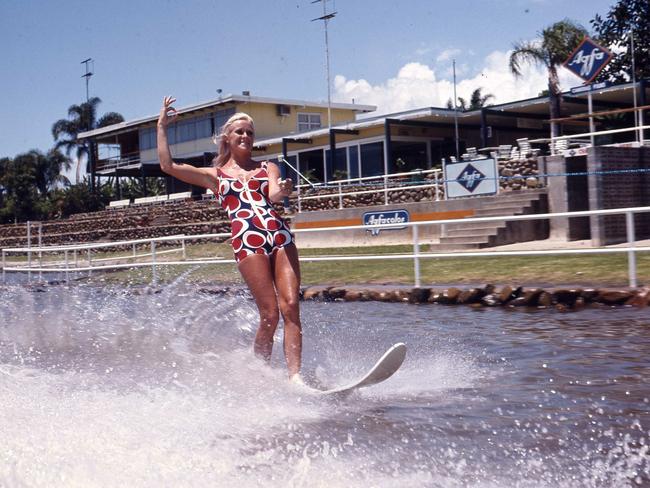
This is a time when holidays are often a matter of tribal loyalty. In southeast Queensland you’re either a Gold Coast or Sunshine Coast family; central and north coast or south coast for Sydneysiders; with Melburnians devoted to the Mornington or Bellarine peninsulas, spots along a quiet Great Ocean Rd or east to Lakes Entrance. The other split is in accommodation. You’re either holiday-flat or camping people, making bookings for the same location each year. It’s a carefree environment and kids gallivant; helicopter parents have not yet been invented.
But we’re growing more affluent. With a tiger in the tank we’re taking adventurous road trips with motel stays. Air travel is within grasp. The two-airline policy keeps Ansett and TAA in lockstep and is no pal to competitive prices in the “friendly skies”. However, there are lots of seats to fill in those Boeing 727s (the Whispering T-jet). Qantas is poised to introduce Boeing 747 Jumbos to complement its 707s, which will democratise international travel.
We’re not there yet, though. Step back in time and see how and where Australians holidayed, ’70s style.
What are your memories of holidays in Australia in the 1970s? Where did you go and what did you do? T+L would love to hear from you. We intend to publish a selection of readers’ anecdotes in a future edition. Please email responses to travel@theaustralian.com.au with “1970s holidays” in the subject line; include your full name and town/city. Alternatively, add to the comments section below.

GOLD AND SUNSHINE COASTS
Originally called the south (of Brisbane) and north coasts and now the Goldie and Sunnie, these strips of fabulous coastline, once a series of villages, are starting to “fill in” in the ’70s and in the GC’s case, reach high. Motels line the Pacific Highway with showstopper names such as the Pink Poodle (survivors will become rich pickings for retro makeovers). The perfect day starts with a swim. Down Coolangatta way it’s a choice of beaches: Kirra, Coolangatta, Greenmount or Rainbow Bay, where kiosks serve custom sundaes. Shark alarms are not uncommon: leave the water, scour for fins, await the all-clear, return, repeat. Take an evening stroll, listen for the Wild One, Johnny O’Keefe, at The Cabbage Patch, or head south of Burleigh to The Playroom, a venue that creates rock ’n’ roll history with bands such as Cold Chisel, Little River Band and Skyhooks.

Surfers Paradise (renamed in 1933 from Elston in a marketing masterstroke) has been the wild child since pyjama parties at The Beachcomber on Cavill Ave raised the ire of the righteous in the ’60s. Meter maids in bikinis and high heels continue to help motorists avoid parking fines. Following the arrival of Surfers’ first high-rise, Kinkabool, in 1960, fibro dwellings are tumbling in a resort with its eye on the sky. The iconic Iluka and Appollo apartment buildings are two of the first to reach more than 20 storeys. The Surfers Paradise Ski Gardens relocates to the Spit as Sea World in 1971, close toits main dolphin-dancing rival, Marineland. Where today’s other theme parks are located it’s a battle of drive-through lion parks operated by circus rivals Bullens and Ashtons. Just don’t wind down your windows. A precursor to those theme parks, Magic Mountain, replete with turreted castle, chairlift and amusement rides, emerges atop Nobby’s Bluff in 1976. Tourists flock to the ever popular Currumbin Bird Sanctuary, opened in 1947 and gifted to the National Trust in 1976.
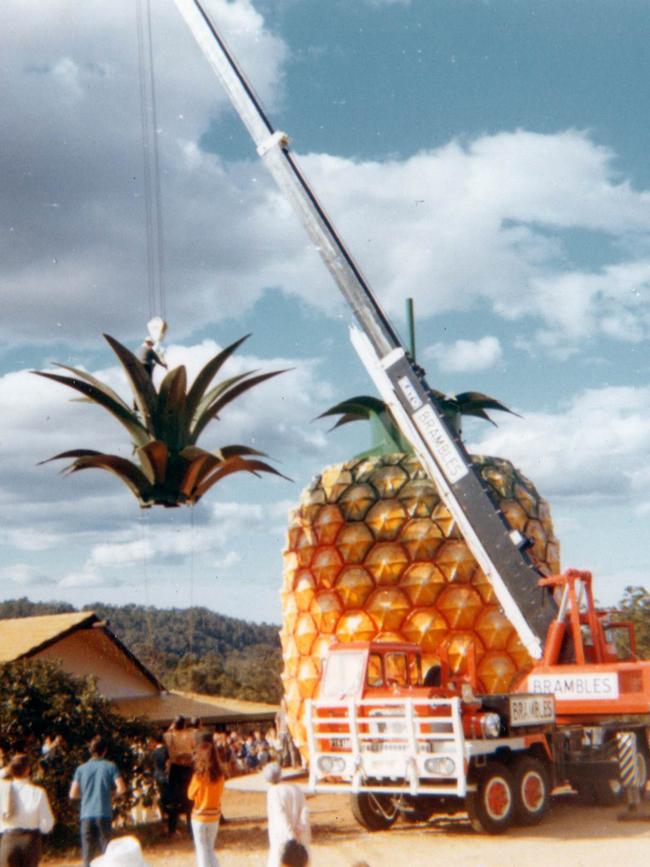
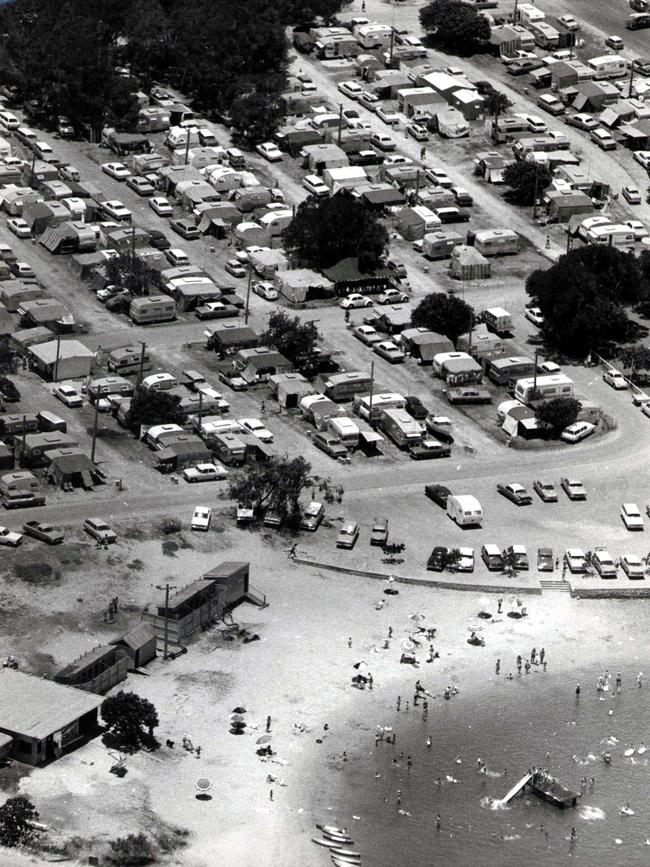
The Sunshine Coast is more camping-oriented. Cotton Tree caravan park, in Maroochydore, once a Salvation Army camp, is considered the oldest such facility, dating from the 1880s. Noosa, with its adjacent national park, has long been a gem, but money is starting to change the landscape. Dredging begins on the canal development of Noosa Sound in 1971 but mooted plans for high-rises on Hastings St are nipped in the bud, as are suggestions of sandmining between Peregian and Sunshine beaches. Tourism development in Maroochydore and Mooloolaba is gathering pace, with apartment blocks shooting up.
The Big Pineapple in Nambour opens in 1971, a companion to the Big Banana in Coffs Harbour, to feed our appetite for epic amusements. The Irwins, a family that will later take fame to stratospheric heights, opens the Beerwah Reptile and Fauna Park in the hinterland in 1973.
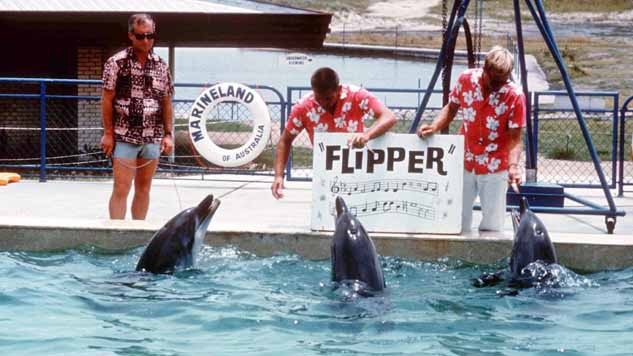
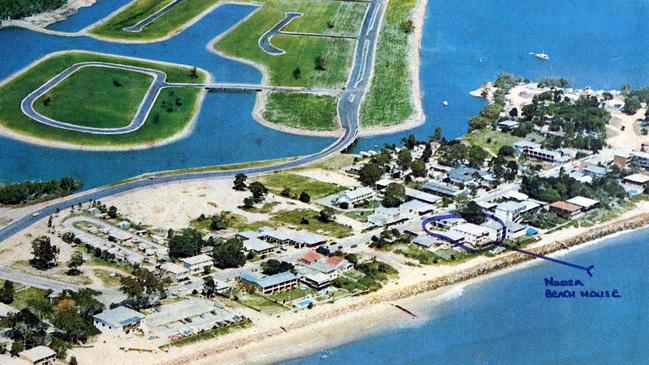
SUNSHINE ROUTE TO CAIRNS
Queensland schoolchildren have learned by rote rail stops along the Sunshine Route from Brisbane to Cairns, so what a thrill to board the Sunlander and spend the next 40 hours chugging to the tropics. The Great Barrier Reef is yet to achieve UNESCO World Heritage status (1981) but it is declared a marine park in 1975, knocking plans for mining and oil exploration on the head. The quintessential experience is a day trip to Green Island, 27km from Cairns, where an underwater observatory and glass-bottomed boats reveal a coral wonderland. As part of her royal tour in 1970, Queen Elizabeth, her hubby and Princess Anne pop by for a sticky beak, raising its tourism profile in the process.
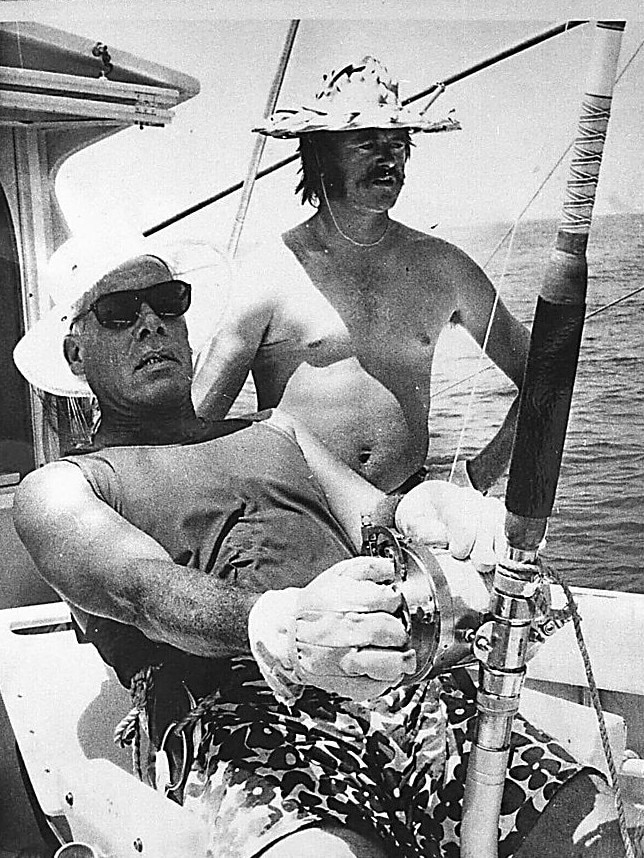
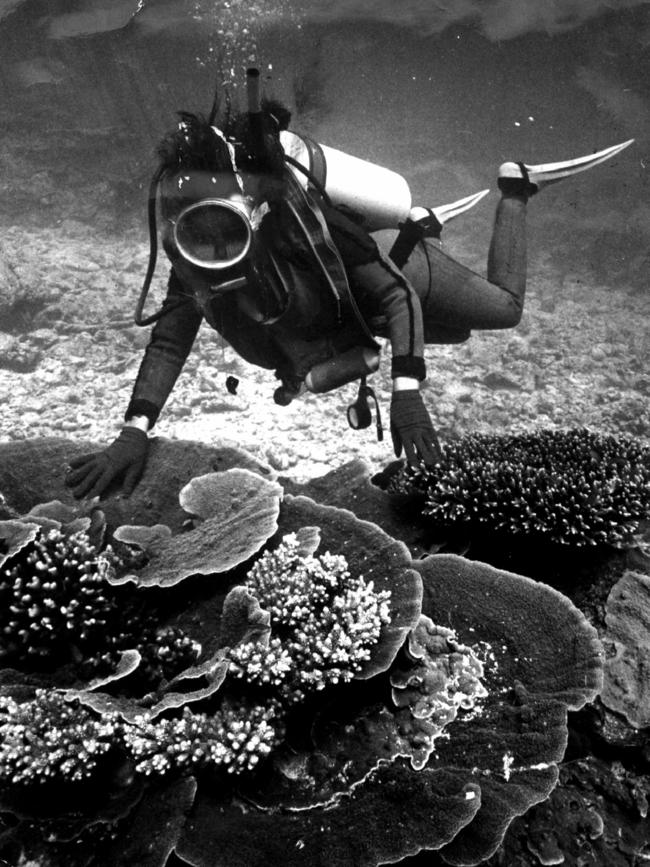
Catamarans offering adventure on the outer reef are still on the drawing board and those marlin-fishing pursuits hailed by Bob and Dolly Dyer on their quiz show, BP Pick a Box, suit the wallet of their pal, actor Lee Marvin, who is a regular visitor. Tourists can take home mementos of handpainted coral, perhaps fashioned into a lamp.
It’s a boom time for tourism in Tropical North Queensland, with the number of beds increasing by 150 per cent from 1974-82. Further north, Port Douglas is a two-pub ghost town awaiting rediscovery thanks to Christopher and Pixie Skase and their Mirage resort in 1987.
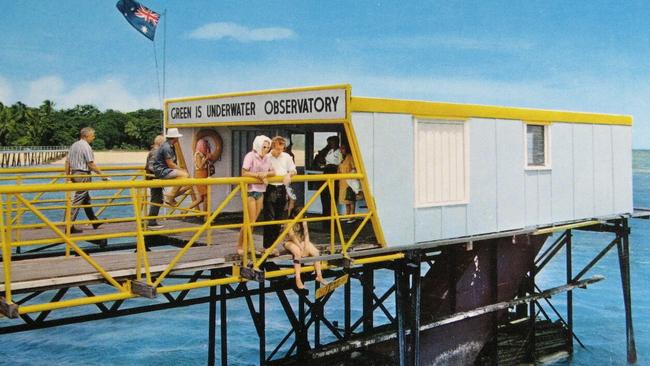
BYRON BAY
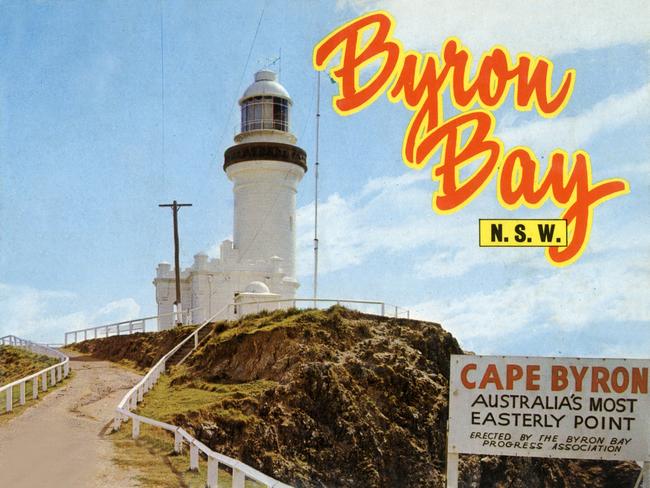
Through to the 1970s, Byron has been the hub of every industry that today’s resident would abhor – timber-getting, rutile mining, whaling and an abattoir, which emits a memorable stench. The meatworks shuts in 1983, but in the wind-down stage there is a glut of workers’ cottages, which sell for a song. With the growth of surf culture, Byron draws the panel-van mob and in 1973 hippies blow in for the Nimbin Aquarius Festival. Some stay, erecting teepees and cultivating cash crops.
SYDNEY AND THE BLUE MOUNTAINS
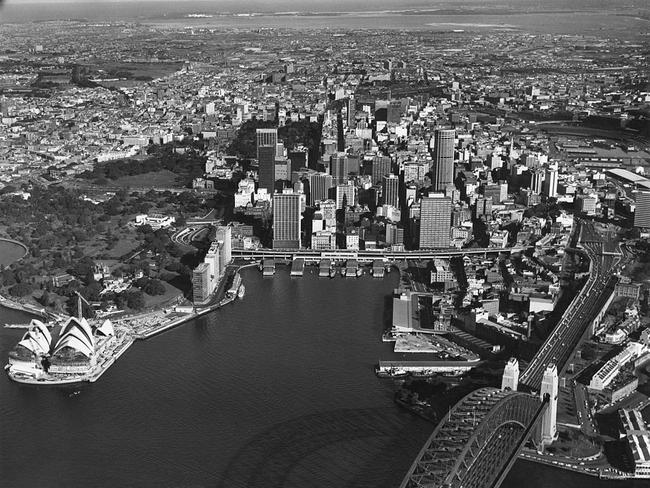
Nothing compares to Sydney as the Opera House gets finishing touches before the Queen opens it in 1973. Culture will complement zany Luna Park across the harbour, which with the bridge and Fort Denison (aka Pinchgut) makes an unbeatable vista. In the heart of the city, work has commenced on a space-age structure called Centrepoint Tower (it will open in 1981), while on the outskirts, visitors get a taste of early colonial life, red coats and all, at Old Sydney Town. In 1975, Hyde Park Barracks is emerging under the care of conservationists to reveal relics of its penal past.
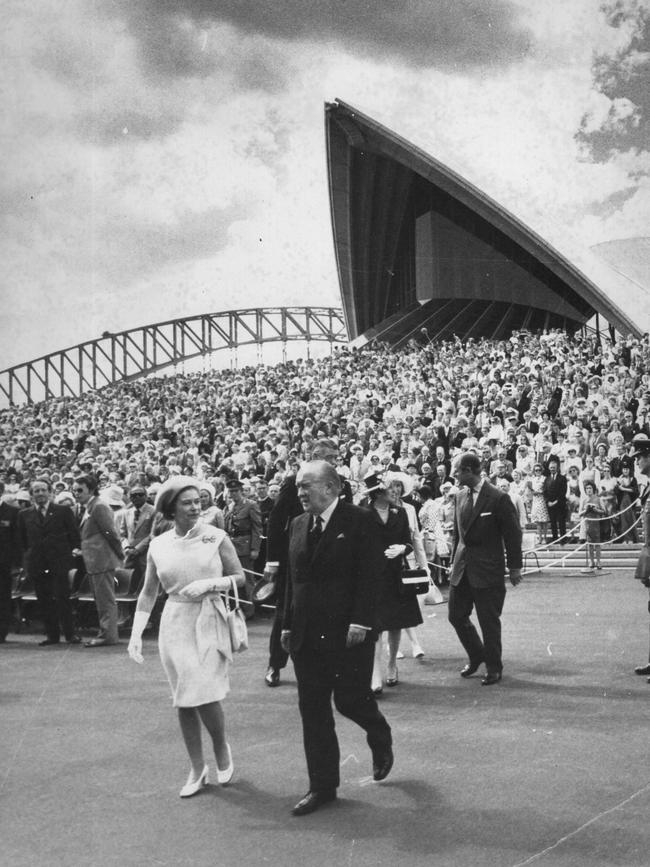
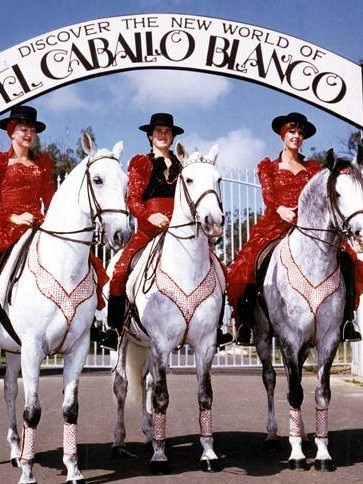
Some say Kings Cross is not the bohemian place it once was, but for the young arrival there is a magnetic allure of mischief. Earn bragging rights by seeing Hair at the Metro Theatre, the tribal love rock musical with a nanosecond nude scene. There’s dancing of a different kind at El Caballo Blanco, a theme park near Campbelltown where Andalusian horses ridden by flamboyantly attired ladies strut their stuff. “Seven miles from Sydney and a thousand miles from care”, Manly has a fish and chip shop rivalled only by Bondi’s, and a million seagulls agree.
In the Blue Mountains, the Three Sisters can be shrouded in cloud, but consolation awaits at Katoomba’s art deco marvel, the Paragon cafe. The rise of the day trip means overnight stays are on the decline, and hotels such as the Hydro Majestic at Medlow Bath and the Carrington in Katoomba have seen better days. The land that will become the Blue Mountains Botanic Garden at Mount Tomah is bequeathed to the Royal Botanic Gardens Sydney by the flower-farming Brunet family in 1972.
MELBOURNE
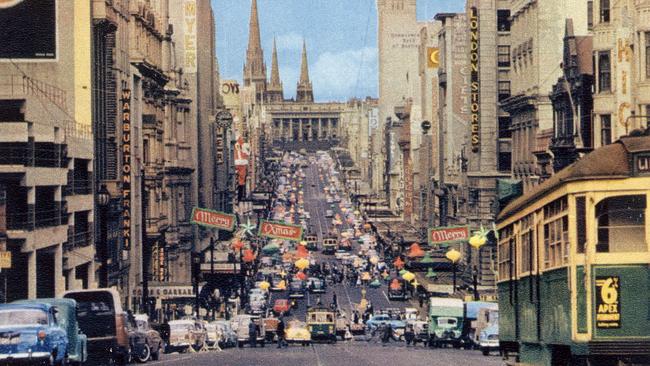
While Sydney is a blaze of blue, Melbourne is green, from gardens to trams. One of those departing its depot is Australia’s contribution to the 1967 satellite telecast Our World while The Beatles wait in London to debut All You Need Is Love. On the must-do list for a ’70s visit is Como House, Cooks’ Cottage (Captain James’s parents lived in it in North Yorkshire, not Fitzroy Gardens), the MCG, Old Melbourne Gaol, where Ned Kelly breathed his last, and the fortress-like National Gallery of Victoria. The thrill is discovering how different Melbourne is, how very European. Browse continental fare at Queen Victoria Market, savour spaghetti marinara – and a revelatory beverage called espresso – at Pelligrini’s, and discover astonishing cakes on Acland St, St Kilda. Lusty new Australian theatre at La Mama and the Pram Factory in Carlton is just the ticket. Tourists have a chance to strike it rich at a new attraction in Ballarat called Sovereign Hill, where a replica gold-rush town opens in 1970.
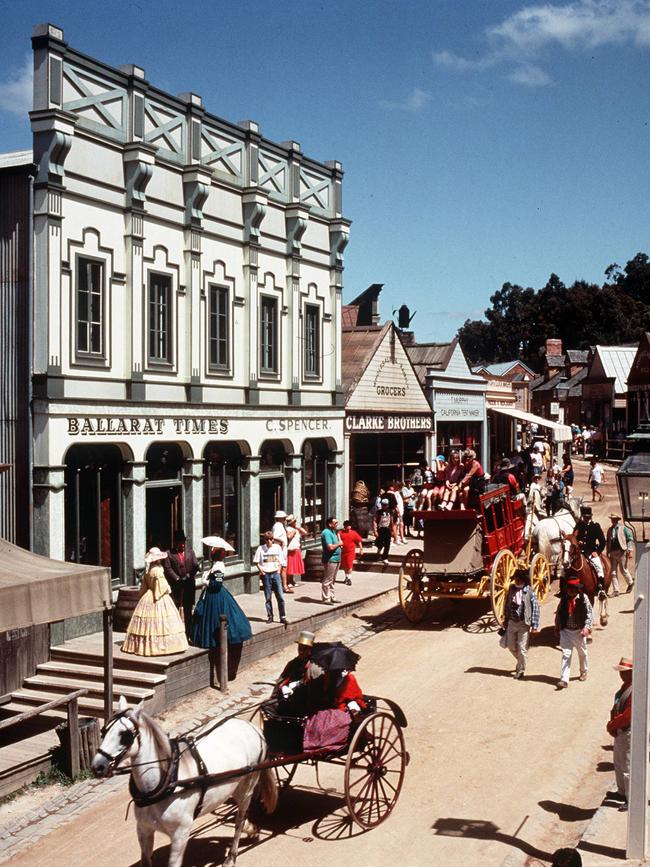
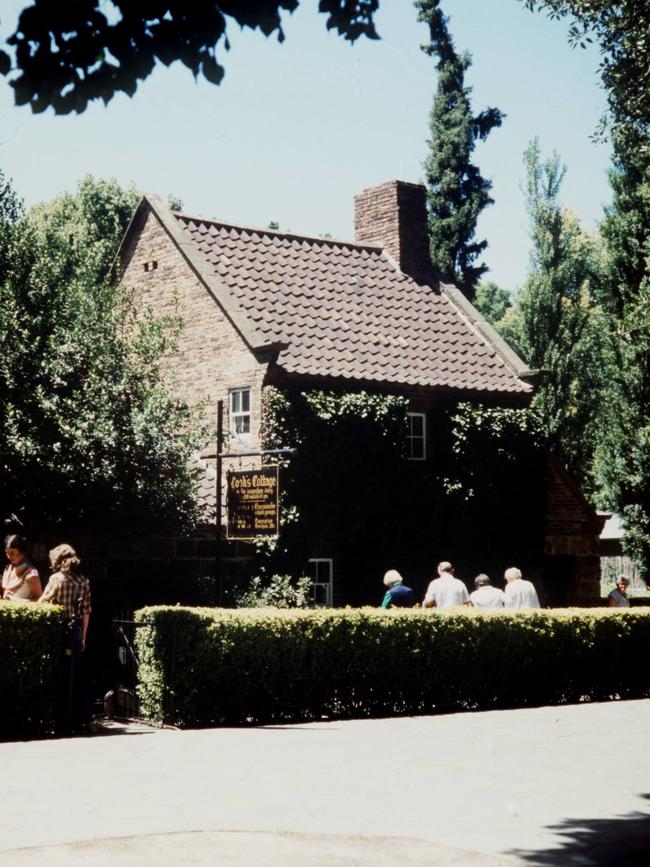
TASMANIA
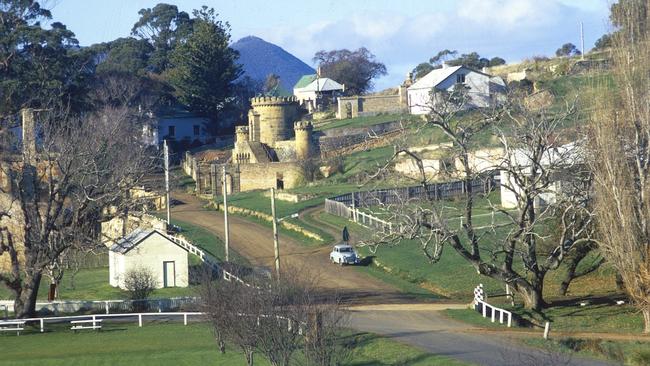
A boat from Melbourne, Empress of Australia, seems the regal way to arrive in the island state. It’s an easy drive from Devonport to Stanley in the northwest where a chairlift transplanted from Mt Baw Baw in 1975 conquers the climb up The Nut, a volcanic remnant with ripper views. The National Parks and Wildlife Service gets to work at Port Arthur, interpreting the site’s brutal convict history for visitors.
The failed battle to save Lake Pedder in 1972 spurs awareness of the Apple Isle’s splendid environment. The Tasmanian Wilderness Society is formed at Bob Brown’s house, and the stage is set for a Franklin Dam showdown.

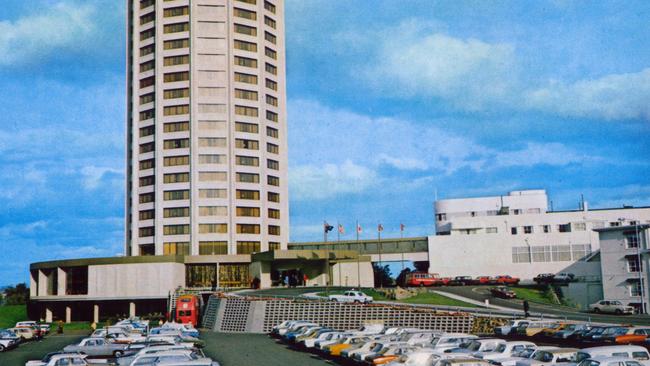
Cradle Mountain’s potential is being tapped and Pencil Pine Lodge, now known as Peppers Cradle Mountain Lodge, takes shape early in the decade, while a guesthouse built in the early 1900s is replaced with Waldheim Chalet. Tent-based guided hikes along the Overland Track are launched in 1970. Hobart’s tourism scene reaches new heights in 1973 with the gala opening of Wrest Point Hotel and Casino televised across the country. At Salamanca, where the collapse of the fruit export industry has seen sandstone warehouses abandoned, creative types band together to form the Salamanca Arts Centre in 1976, a cultural hub that paves the way for some hugely popular markets.
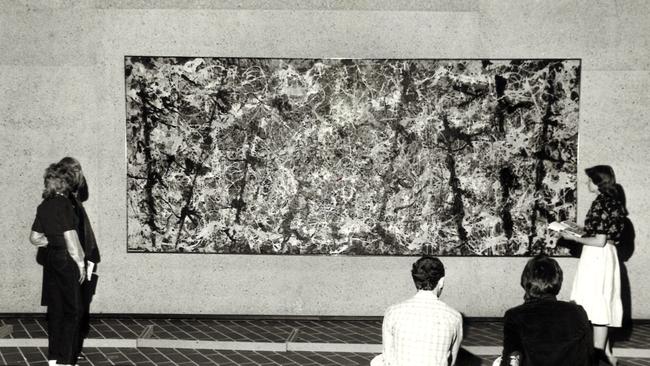
CANBERRA
A visit to the nation’s capital is more “educational” than fun, although the bamboozling roads are entertaining if you’re not driving. (Old) Parliament House and the War Memorial are outings of significance. Hope for a sighting of the distinctive ears of PM Billy McMahon or the man who will replace him in 1972, Gough Whitlam, followed by his usurper, Malcolm Fraser. The National Library (1968) is the first institution in the cultural precinct. The collection of the National Gallery is being shaped by a team housed in what will become a porn warehouse. Among their controversial purchases is Jackson Pollock’s Blue Poles, which Gough sends on tour before it claims pride of place when the gallery opens in 1982.
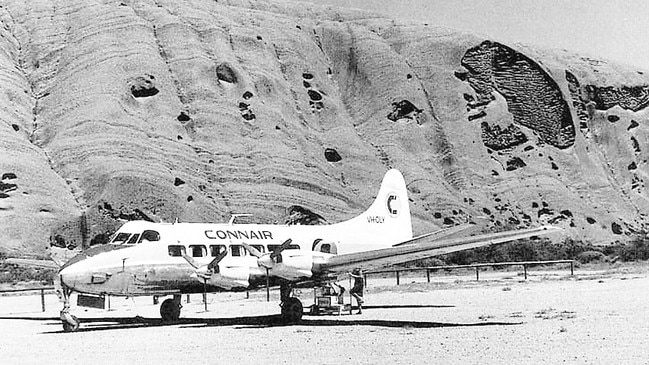
RED CENTRE
Alice Springs is the staging point, but it’s a rough 500km road to Ayers Rock, where a hotel, four motels, a store, a service station, camping ground and airstrip nestle at its base. It’s decided in the ’70s to move the lot to a new site, Yulara, away from the monolith, but it takes time. A Four Seasons and Sheraton hotel will soon be in the works, opening in 1984; meanwhile, the Rock is something to clamber over, exclaim “wow” and move on.
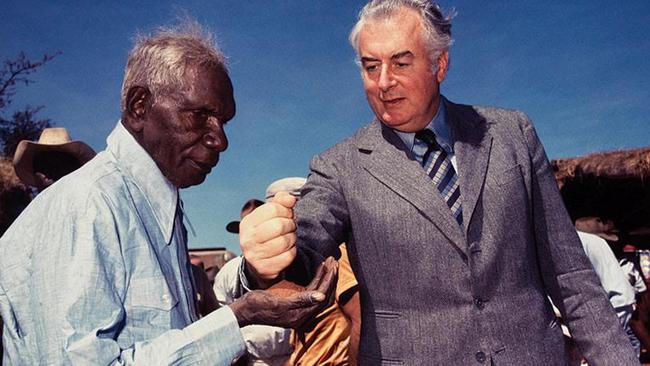
There’s something in the air, however. In 1975, elsewhere in the NT, Whitlam pours a handful of red dirt into the palm of Gurindji man Vincent Lingiari, symbolising the first time land has been returned to Indigenous Australians. In 1977, the Uluru region is finally declared a national park under commonwealth law. Many decades of negotiations and deals lie ahead but Indigenous tourism will increasingly show the cultural importance of this spectacular landform.
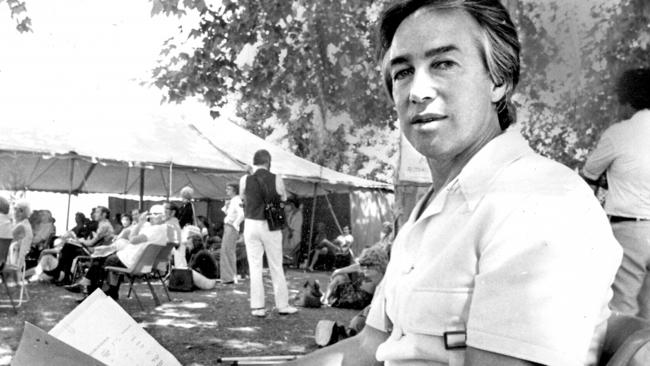
SOUTH AUSTRALIA
The madness of March is gradually increasing in the City of Churches as the arts festival grows year by year, gaining a permanent HQ with premier Don Dunstan’s 1973 opening of the Adelaide Festival Centre; the unofficial Fringe makes cultural waves every two years. The CBD gets a modern new look with the opening of Rundle Mall in 1976. Visitors can cruise the Torrens on heritage wooden boat Popeye but locals prefer to go further afield for their river adventures, to the Murray. Summers are sunburnt affairs at an array of beaches – Semaphore, Glenelg and Australia’s first nudist option, declared in 1975, the southern section of Maslin. In the Flinders Ranges, the resort at the entrance to Wilpena Pound comes under the control of the National Parks and Wildlife Service in 1972, while Rawnsley Park Station, established as a farm stay in 1968, is a growing concern.
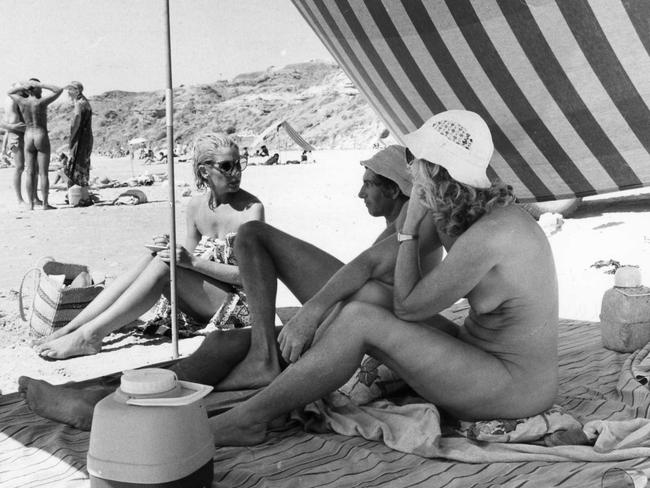
On the Eyre Peninsula, holidaymakers are more likely to be hooking King George whiting than slurping Coffin Bay oysters, despite the fact the molluscs have been cultivated here since the 1840s. Successful trials of the Pacific variety in 1969 will see producers really start to come out of their shells, so to speak. Kangaroo Island’s star is on the rise after a local businessman starts a regular ferry service to the island. In 1976, a film about a boy and his pelican pal shines the spotlight on the Coorong and Fleurieu Peninsula in the state’s south.

WESTERN AUSTRALIA
It may be on the other side of the country, but Perth shares ’70s DNA with other tourism hubs. It, too, boasts a Bullen’s African Lion Safari Park and a Spanish dancing-horse attraction but it takes the kitsch up a notch with a mini-version of Bavaria’s Neuschwanstein Castle.
Adventurous types are discovering the off-road thrills of the Gibb River Rd, which, in the absence of expedition cruise ships, provides the main access to the Kimberley region. Kununurra, purpose built for workers on the Ord River irrigation project, will eventually become the gateway to the East Kimberley. Lake Argyle, formed with the 1972 opening of the Ord River Dam, submerges most of the pioneering Durack family’s Argyle Downs station but a camping and caravan park that opens in 1973 proves hugely popular.
The Bungle Bungles are yet to be “discovered” (1983), people spend most of their time at Ningaloo catching rather than admiring fish, and eccentric Englishman Lord Alistair McAlpine is yet to move to Broome, build Cable Beach Resort and cement the town’s place in the WA tourism firmament.
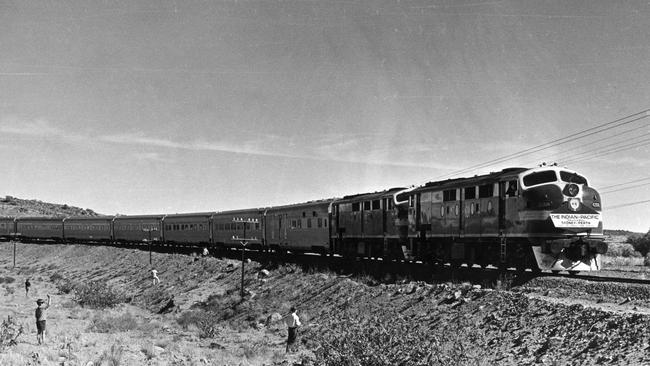
More to the story
■ In the 1970s, for many people wine comes in bottles labelled Ben Ean, Porphyry Pearl or Blue Nun. But tastes are maturing and the Barossa Valley, near Adelaide, and Hunter Valley in NSW, with vineyards established in the 1800s, are poised to cater to cellar-door wine tourism.
■ The Indian Pacific leaves Sydney in 1970 on its first three-day journey to Perth on a single-gauge rail track. To attempt the Eyre Highway across the Nullarbor is a brave choice, so the tyranny of distance puts Perth on the wish list for many eastern states travellers. Migrants from Europe by ship have a chance to sample WA’s charms. Many stay and join locals on their favourite overseas jaunt – Rottnest Island, 33km away.
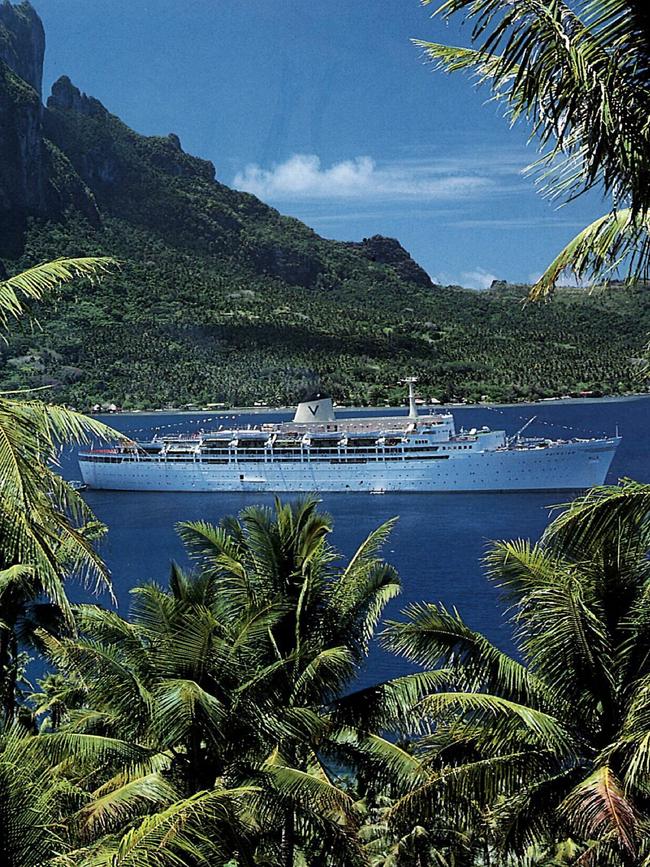
■ Student charter flights help young Aussies discover the world. The rite of passage is to London, with digs in Earls Court and the purchase of a Kombi outside Australia House for the grand tour of Britain and the Continent.
■ New Zealand is a choice of champions too: you’ve never seen anything like the mud pools and geysers of Rotorua.
■ Cruising is full steam ahead for passengers inspired by Women’s Weekly tours; favourite ports include Singapore and Hong Kong where duty-free shopping becomes a free-for-all for watches and cameras. Ships such as Fairstar and Oriana are introducing Aussies to the pleasures of the South Pacific.
The ’70s countdown
Destination and number of person-trips, including visiting relatives and recreational (’000s)
MELBOURNE – 6247
SYDNEY AND BLUE MOUNTAINS – 5122
BRISBANE – 2078
ADELAIDE AND BAROSSA – 1717
PERTH – 1674
GOLD COAST – 1571
NSW CENTRAL COAST – 1301
ACT – 1052
NEWCASTLE – 1103
GEELONG AND BELLARINE – 895
National Travel Survey 1977-78

To join the conversation, please log in. Don't have an account? Register
Join the conversation, you are commenting as Logout